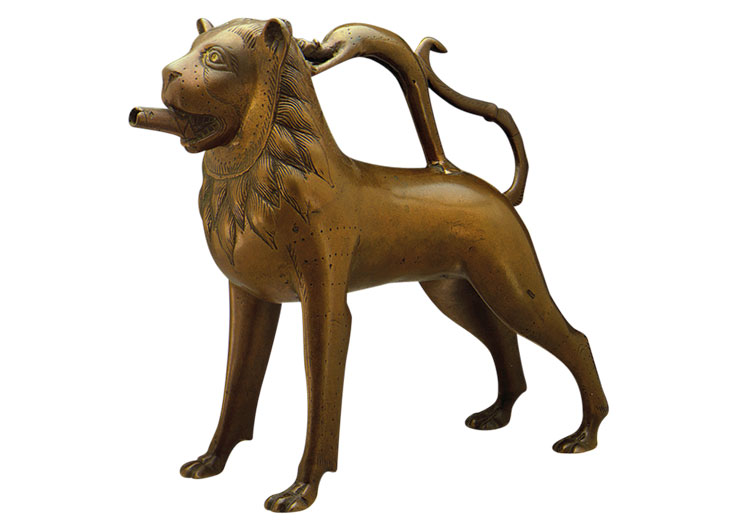Encyclopaedia, devotional guide and storybook in one, the bestiary was hugely popular in the Middle Ages. Its illustrations of real and mythical creatures have inspired artists for centuries, as this show of manuscripts and other artworks attests. Find out more from the Getty’s website.
Preview the exhibition below | View Apollo’s Art Diary here

Page from the Ashmole Bestiary (c. 1200), England. Ashmolean Museum, Oxford
Bestiaries often combined descriptions of the characteristics of natural or supernatural animals with moral and spiritual lessons. This scene from the Ashmole Bestiary – an early English manuscript of around 1200 – represents the popular belief that a unicorn could only be captured if a maiden was placed in the beast’s path; many texts interpreted the unicorn as an allegory for Christ, with the hunt symbolising the Crucifixion.

Aquamanile (c. 1250), Germany. Metropolitan Museum of Art, New York
As king of the beasts, the lion had the honour of the first chapter in most bestiaries – which was also often the longest and most complex. The legend that the lion always covered its tracks with its tail led commentators to suggest allegories with Christ, who concealed his divinity; lions were also held up as moral examples, as they were believed to be slow to anger and quick to forgive.

Page from a 13th-century English bestiary. Ashmolean Museum, Oxford
Lions were also believed to give birth to dead cubs, which the parents brought to life by breathing on their faces – as depicted in the bottom panel of this page.

Detail from a page of Liber Floridus (1460), France. Koninklijke Bibliotheek, The Hague
The Liber Floridus (‘Book of Flowers’), completed in France in the early 12th century, is thought to be the earliest illustrated encyclopaedia compiled in Europe. Through many hundreds of texts and pictures, the work explores subjects such as astronomy, geography, religion, and natural history. It remained popular for centuries; this page, depicting a mythical griffin devouring its prey, is from a manuscript of 1460.











![Masterpiece [Re]discovery 2022. Photo: Ben Fisher Photography, courtesy of Masterpiece London](http://www.apollo-magazine.com/wp-content/uploads/2022/07/MPL2022_4263.jpg)
Has the Fitzwilliam lost the hang of things?